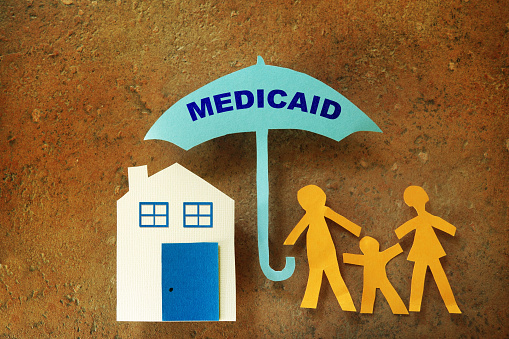|
Many people incorrectly assume that the federal Medicare program will finance their long term care needs, whether in the community or a nursing home. In fact, Medicare pays for only a small number of people in any nursing home setting, and only for a limited amount of time for individuals who need rehabilitation therapy or complex medical care following a hospital stay. In order to receive Medicare-covered services in a nursing home, an individual must meet very strict criteria. Eligibility for this option should be discussed with the discharging hospital, the admitting nursing home or the local department of social services or office for the aging.
On average, more than 75% of the residents in New York's nursing homes have their care covered by the Medicaid program. Medicaid is a federal-state-local program to help pay for medical care for those who cannot afford to do so on their own. Medicaid recipients qualify for the program by meeting certain income and asset standards. |
Medicare does not cover assisted living or adult care facility services. Currently, there are limited options for low-income individuals. In New York, only the Assisted Living Program (ALP) is covered by Medicaid.
The cost of in-home and community-based services varies depending on the type of program and amount of services needed. Medicare, Medicaid, long term care insurance and private insurance are payment sources for some home and community-based services. Medicare tends to cover these services on a short-term basis following a hospital stay, whereas Medicaid may cover services over a longer period of time. Insurance policies have specific criteria for what services are covered, for how long, and under what circumstances.
The State has recently enacted changes that will, over time, require that the majority of Medicaid recipients enroll in Medicaid managed care plans. This requirement is gradually being phased in across the State, with some counties further along in the process than others. Each Medicaid recipient will likely make a choice of a managed care plan, similar to choosing an insurance program. Failing to make a choice, the individual may be automatically enrolled in a plan. Once a person is enrolled in managed care, the managed care provider will coordinate and supervise the person's care along with coordinating the payment for services, including the full array of long term care services the individual may need.
The cost of in-home and community-based services varies depending on the type of program and amount of services needed. Medicare, Medicaid, long term care insurance and private insurance are payment sources for some home and community-based services. Medicare tends to cover these services on a short-term basis following a hospital stay, whereas Medicaid may cover services over a longer period of time. Insurance policies have specific criteria for what services are covered, for how long, and under what circumstances.
The State has recently enacted changes that will, over time, require that the majority of Medicaid recipients enroll in Medicaid managed care plans. This requirement is gradually being phased in across the State, with some counties further along in the process than others. Each Medicaid recipient will likely make a choice of a managed care plan, similar to choosing an insurance program. Failing to make a choice, the individual may be automatically enrolled in a plan. Once a person is enrolled in managed care, the managed care provider will coordinate and supervise the person's care along with coordinating the payment for services, including the full array of long term care services the individual may need.
Medicare |
Medicaid |
Private Pay/Insurance |





